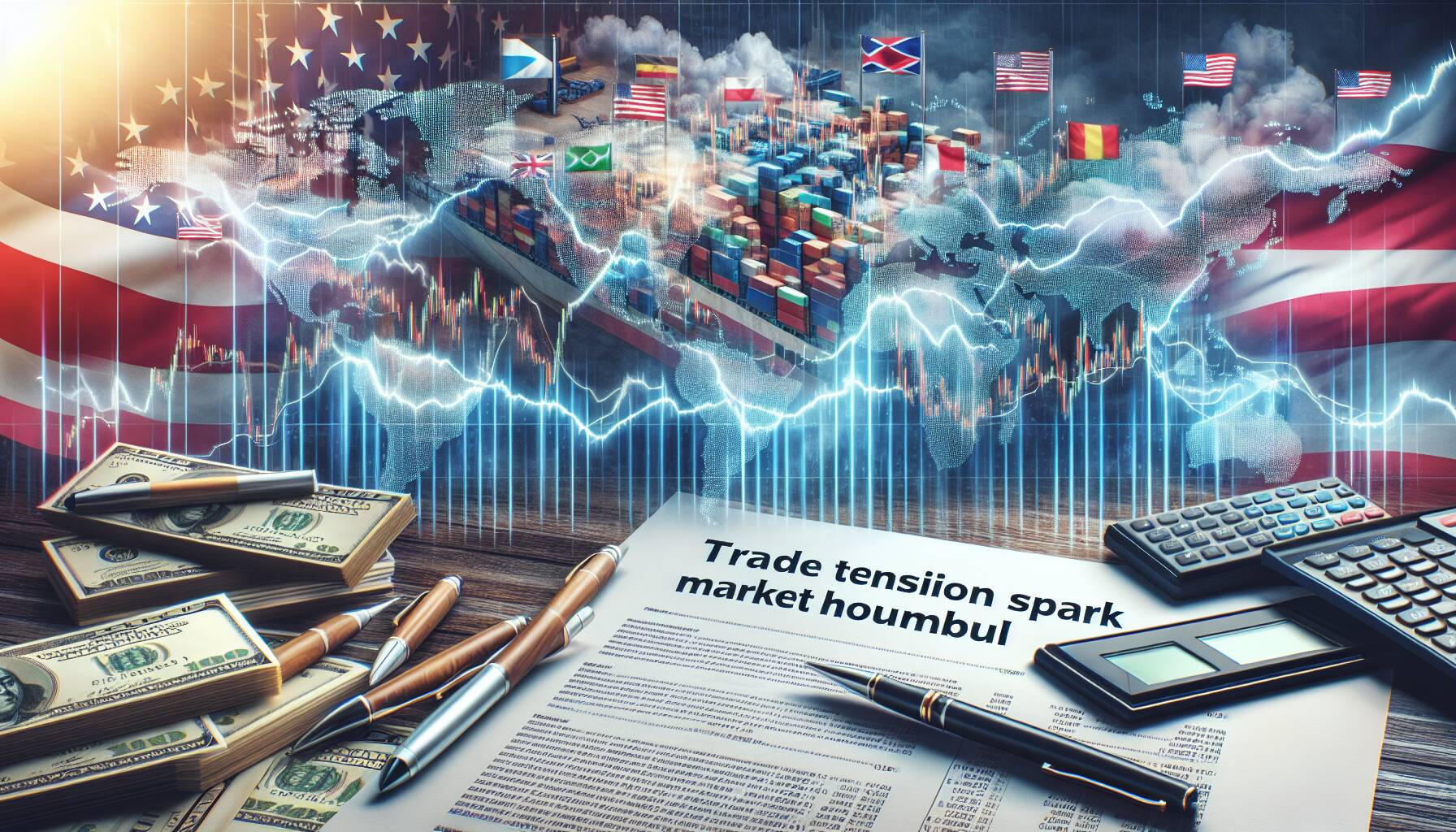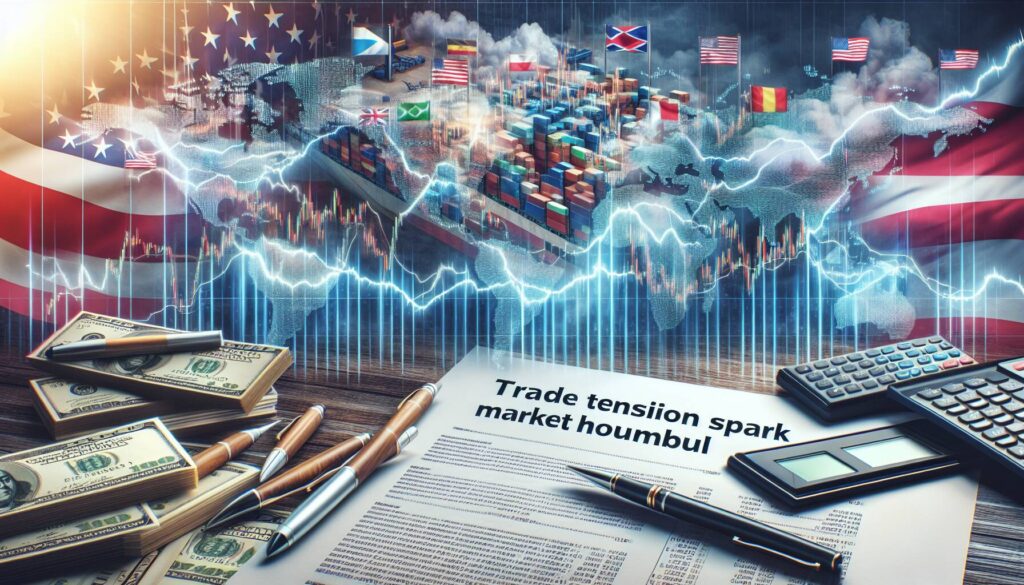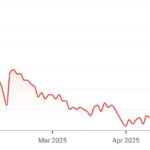In a surprising twist to an otherwise calm trading day, President Trump has reignited existing trade tensions just ahead of the holiday weekend. His recent remarks on **Truth Social** have made headlines, particularly regarding the European Union and tech giant Apple. “The European Union has been very difficult to deal with,” he stated, declaring his intentions to implement a hefty 50% tariff on EU imports starting June 1. This bold move signals escalating trade disputes, stirring market reactions.
In addition to targeting the EU, Trump voiced strong expectations regarding Apple and its CEO, Tim Cook. He emphasized that iPhones sold in the U.S. should be manufactured domestically, warning that a 25% tariff would be imposed if production does not align with this directive. The implications of these announcements were felt swiftly, with U.S. stock index futures shifting from a modest upward trend to significant declines, as key players like Apple saw a sharp drop of 3.6% in its stock price.
The turmoil didn’t spare the cryptocurrency market either. Bitcoin, which was trading above $111,000 just moments before the president’s statements, fell to around $108,600. This volatility reflects how intertwined global trade dynamics are with investor sentiment in digital currencies.
“Trade discussions with the EU are going nowhere!” – President Trump
As the landscape continues to evolve, traders and investors alike are watching closely. The ripple effects of these tariffs and comments on major corporations and digital currencies could reshape market strategies and expectations in the days to come.

Impact of Trump’s Trade Tweets on Markets
Recent statements made by President Trump regarding trade tensions have significant implications for various sectors, including technology and cryptocurrency markets.
- Escalation of Trade Tensions: President Trump’s announcement of a potential 50% tariff on the EU indicates a return to aggressive trade policies.
- Impact on U.S. Companies:
- Specifically targeting Apple, Trump has called for iPhones sold in the U.S. to be made domestically, potentially leading to increased production costs.
- Failure to comply could result in a 25% tariff, impacting Apple’s pricing strategy and profit margins.
- Market Reactions:
- U.S. stock index futures fell by nearly 2%, showcasing investor anxiety about these new tariffs.
- Apple’s stock dropped by 3.6% in response to the tariff threats, potentially affecting investors and retirement funds tied to the company.
- Bitcoin prices also saw a significant downturn, highlighting how sensitive financial markets are to political news.
- Broader Economic Implications:
- Increased tariffs may result in higher consumer prices for goods, affecting everyday purchases.
- Long-term trade tensions could hinder economic growth, impacting job markets and wage levels.
“Our discussions with them are going nowhere! Therefore, I am recommending a straight 50% tariff on the EU, starting on June 1.”
Trump’s Trade Tensions: A New Wave of Economic Uncertainty
In a surprising turn of events, President Trump’s recent remarks have stirred up the relatively quiet atmosphere in the markets preceding the holiday weekend. His call for a hefty 50% tariff on the European Union amplifies the already roaring flames of trade tensions. This unexpected announcement marks a significant pivot that could further complicate the economic landscape and has direct implications for various sectors, particularly technology and agriculture.
Competitive Advantages: The immediate aftermath of Trump’s pronouncement sparked a pronounced reaction in U.S. stock index futures, swiftly transitioning from positivity to nearly a 2% decline. While sectors closely related to exports may face the brunt of the tariffs, domestic manufacturers might experience a short-term boost as the administration’s focus shifts back toward U.S.-made goods. Companies capable of shifting operations domestically could leverage this situation, appealing to patriotic sentiments among consumers, thus driving sales. For the tech sector, particularly, this could provide a strategic advantage for firms ready to respond to domestic production mandates.
Competitive Disadvantages: However, this aggressive stance is rife with uncertainties. The implications for international relations cannot be dismissed; the European Union may retaliate, leading to a tit-for-tat scenario that could exacerbate existing trade issues. For Apple and similar tech giants that rely heavily on global supply chains, the ultimatum set by President Trump creates a very precarious situation. If the required transition to U.S. production isn’t feasible, firms like Apple may need to absorb tariff costs, which could ultimately impact consumer prices and market share.
This situation is poised to affect various stakeholders. Small-to-medium enterprises and large corporations with significant reliance on EU exports face a daunting challenge, as the prospect of higher tariffs could squeeze their margins and competitiveness. Conversely, consumers could find themselves in a tough spot as prices could rise due to these tariffs, leading to a potential decrease in discretionary spending. Moreover, tech firms that manufacture overseas may have to hastily reevaluate their supply chain strategies, which could lead to disruption and increased operational costs.
In summary, President Trump’s rekindling of trade tensions introduces both opportunities and challenges across the economic landscape. The question now is whether the shakeup will galvanize U.S. manufacturing or unduly burden both companies and consumers who depend on a globally integrated economy.

















